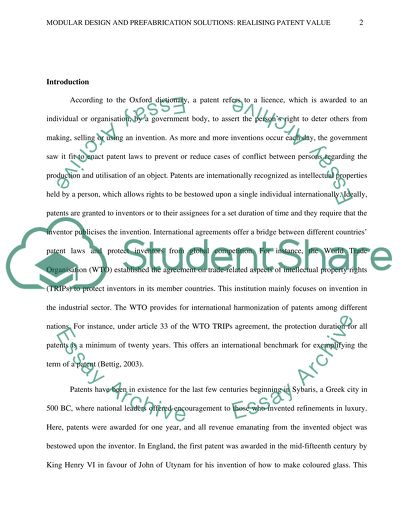Cite this document
(“Modular Design and Prefabrication Solutions: Realising Patent Value Dissertation”, n.d.)
Retrieved from https://studentshare.org/design-technology/1394947-modular-design-and-prefabrication-solutions-realising-patent-value
Retrieved from https://studentshare.org/design-technology/1394947-modular-design-and-prefabrication-solutions-realising-patent-value
(Modular Design and Prefabrication Solutions: Realising Patent Value Dissertation)
https://studentshare.org/design-technology/1394947-modular-design-and-prefabrication-solutions-realising-patent-value.
https://studentshare.org/design-technology/1394947-modular-design-and-prefabrication-solutions-realising-patent-value.
“Modular Design and Prefabrication Solutions: Realising Patent Value Dissertation”, n.d. https://studentshare.org/design-technology/1394947-modular-design-and-prefabrication-solutions-realising-patent-value.


